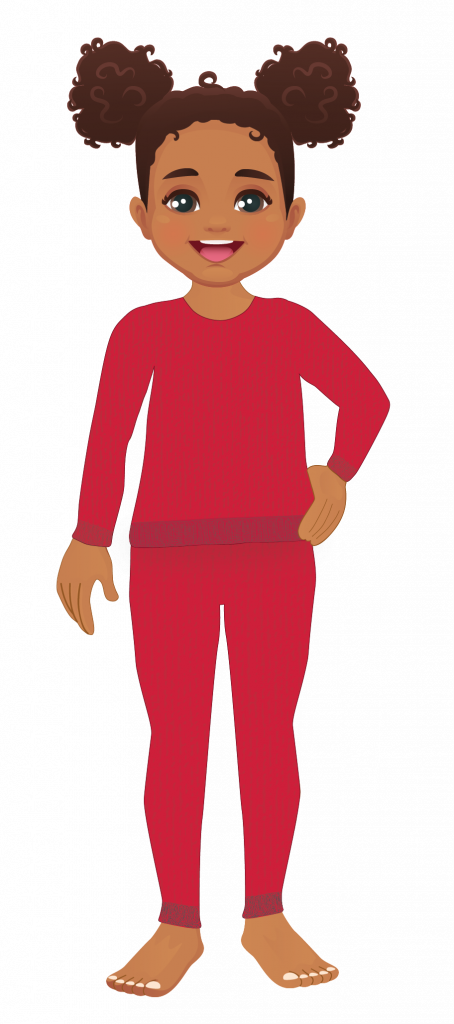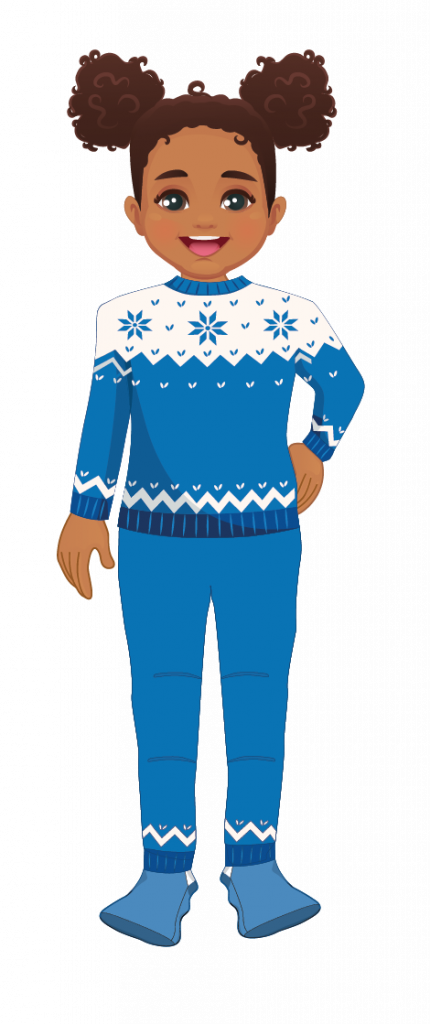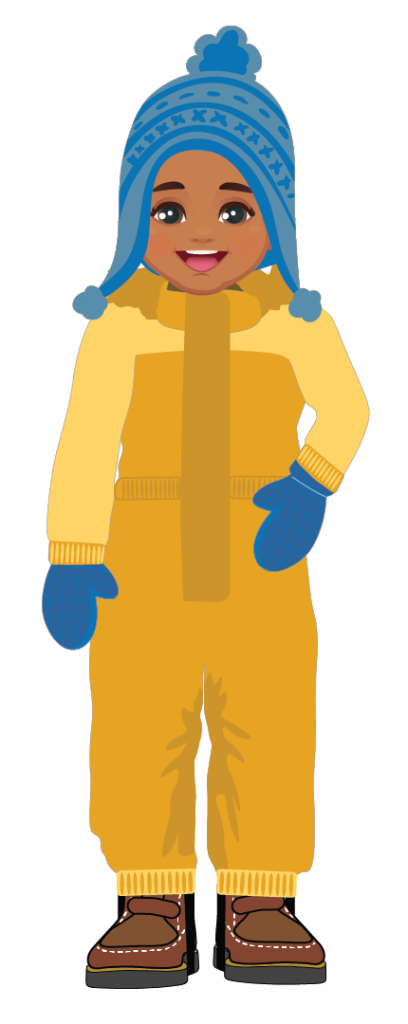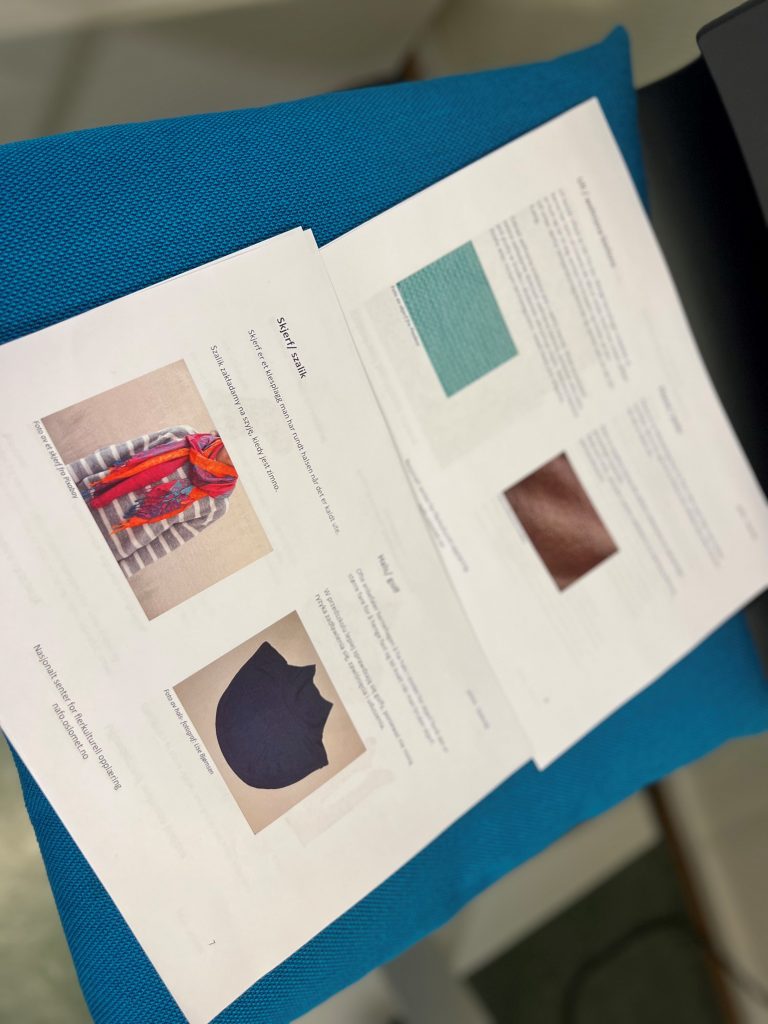Dress the children in the winter cold.
It’s best to dress children in three layers of clothing to keep them warm and dry. Each layer, from the innermost to outermost, has a specific function. Together, these layers should keep the body dry, insulate, and protect against wind and snow.

The innermost Layer
The innermost layer should help keep the body dry.
Use woolen underwear or super underwear that is thin and tight-fitting, directly on the skin. Wool wicks a lot of moisture away from the skin and insulates even when it’s wet. Super underwear wicks more moisture than wool, but does not insulate when it’s wet. Avoid using cotton as the innermost layer, as it gets wet and loses its ability to retain heat.

The Middle Layer
The middle layer should primarily insulate against the cold. It’s the air between the innermost and the outermost layer that retains the heat. Therefore, the clothing in the middle layer should fit a bit looser on the body, but should not be too large. Wool or fleece is recommended. Adjust the thickness according to the temperature.
Use wool socks to keep the feet dry and warm.

The Outermost Layer
The outermost layer should protect against wind, rain, and snow.
You can choose between an overall or a jacket and pants. An outer pair of pants or overall should have straps that can be fastened under the shoes to prevent them from sliding up and to stop snow and water from getting in.
A beanie that retains heat well is important for keeping the whole body warm, as a great amount of heat loss happens through the head. Make sure the beanie fits tightly around the ears and covers the forehead, cheeks, and neck. You can also use a scarf or a neck warmer to protect the neck.
Use warm and waterproof mittens and make sure they fit well to prevent water and snow from getting in.
Children must be able to move their toes to keep their feet warm. Therefore, it’s important that there’s enough room in the shoes, even with thick wool socks on.
Remember:
- When it’s windy, it feels colder.
- Small children get cold more easily than adults.
- The temperature is lower closer to the ground.
- Keep an eye on the children and feel their neck to see if they are warm enough.
This page is also printer-friendly. Click the “print” button at the top of the post.
Read more about clothing and dressing in the winter cold in multiple languages
TIL DU SOM OVERSETTER!!
Det som kommer under her er det samme som i tabellen over! Du kan derfor kopiere og lime inn. Du trenger IKKE å oversette to ganger. Det skal ikke være lydblokker på det som kommer under, dette er til utskrift.
Dress the Children in the Winter Cold
It’s best to dress children in three layers of clothing to keep them warm and dry. Each layer, from the innermost to outermost, has a specific function. Together, these layers should keep the body dry, insulate, and protect against wind and snow.

The Innermost Layer
The innermost layer should help keep the body dry.
Use woolen underwear or super underwear that is thin and tight-fitting, directly on the skin. Wool wicks a lot of moisture away from the skin and insulates even when it’s wet. Super underwear wicks more moisture than wool, but does not insulate when it’s wet. Avoid using cotton as the innermost layer, as it gets wet and loses its ability to retain heat.

The Middle Layer
The innermost layer should help keep the body dry.
Use woolen underwear or super underwear that is thin and tight-fitting, directly on the skin. Wool wicks a lot of moisture away from the skin and insulates even when it’s wet. Super underwear wicks more moisture than wool, but does not insulate when it’s wet. Avoid using cotton as the innermost layer, as it gets wet and loses its ability to retain heat.

The Outermost Layer
The outermost layer should protect against wind, rain, and snow.
You can choose between an overall or a jacket and pants. An outer pair of pants or overall should have straps that can be fastened under the shoes to prevent them from sliding up and to stop snow and water from getting in.
A beanie that retains heat well is important for keeping the whole body warm, as a great amount of heat loss happens through the head. Make sure the beanie fits tightly around the ears and covers the forehead, cheeks, and neck. You can also use a scarf or a neck warmer to protect the neck.
Use warm and waterproof mittens and make sure they fit well to prevent water and snow from getting in.
Children must be able to move their toes to keep their feet warm. Therefore, it’s important that there’s enough room in the shoes, even with thick wool socks on.
Remember:
- When it’s windy, it feels colder.
- Small children get cold more easily than adults.
- The temperature is lower close to the ground.
- Keep an eye on the children and feel their neck to see if they are warm enough.
Les mer om klær og påkledning på flere språk ved å scanne QR-koden

morsmal.no
Vil du ha en brosjyre om vinterklær på mange språk?

Om vinterklær// Winter clothes
Ressursen Om vinterklær på flere språk kan hjelpe personalet og gi foresatte viktig informasjon om klær.